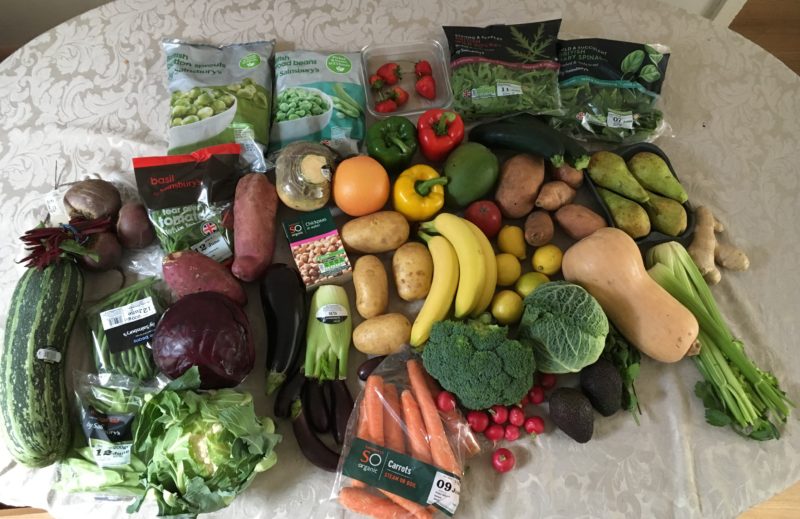I have been thinking a lot recently about diversity and abundance. To the point that I think they are my new catch-phrase.
In order to have healthy gut flora, and therefore a healthy immune system, your micro biome must be both diverse and abundant. And to achieve this, your diet must be both diverse and abundant. And by diet, I specifically mean plant-foods in your diet.
You may have heard me speak about, or seen me write about the important of eating all 6 colours of fruit and veg every day. But how about portion? How many servings of plants do you eat in a day? How many different plants do you eat in a week?
Ideally, we should be aiming for 10 – 15 servings of plants per day, and according to nutritionist and author Jeanette Hyde in her excellent book The Gut Makeover, we should be eating at least 30 different kinds of plants per week.
So that’s 6 colours, 10 – 15 servings and 30 or more different plants.
Well, my when my grocery order arrived this morning, I decided to actually count how many different plant foods I had ordered this week. And then I decided I would take a pic and share it with you so that you can see what more than 30 different varieties of fruit and veg look like in real life.
This was a bit of a spur-of-the-moment decision, I have not created an ‘ideal’ grocery order, styled my tablescape or even used a good camera, but hopefully you won’t mind any of that. This is just an actual, real-life look into my shopping trolley, in a busy, not-perfect week.
What do we find?
Well, I am happy to report that I counted 34 different plants, including two types of herb. This figure doesn’t take into account other herbs that I will cut from the garden or herbs and spices that I use dried, that certainly found towards the final tally. I also have more foods in the fridge, e.g. black radish and jerusalem artichoke pickle and stewed rhubarb, and other beans in the cupboard, plus various powders such as spirulina that will add to the final count. Overall, I think I probably eat more than 40 varieties on average, admittedly less on a really bad week when I am just in survival mode.
I have included all 6 colours here as well. The colour categories are red, yellow, orange, green, blue/purple, brown/white/tan.
Here is a list of what you see here:
- Marrow
- Beets
- Green beans
- Mange tout (snow peas)
- Cauliflower
- Red Cabbage
- White Sweet Potato
- Basil
- Brussel Sprouts
- Broad Beans
- Swede
- Chickpeas
- Fennel
- White potato
- Aubergine / Eggplant (two different varieties)
- Carrots
- Radish
- Broccoli
- Banana
- Lemons
- Apple
- Mango
- Rocket (Arugula)
- Spinach
- Pears
- Ginger
- Celery
- Mint
- Green Cabbage
- Avocado
- Zucchini (Courgette)
- Strawberries
- Peppers (Capsicum)
- Grapefruit
How do I actually eat all of these?
The one thing I do that make the biggest difference, is that I food prep. I chop everything at once, upfront. That saves a ton of time and makes the rest of the week feel much easier. Then I batch cook a lot of things to reheat or snack on during the week, and assemble salads that can also be stored in the fridge and eaten as they are or with some dressing added at the last minute. Having food easily to hand at all times helps me to make better decisions and take better care of myself when I am in a hurry, stressed or tired. Which as a working mum of two under two, is actually all the time, haha.
I will make a more detailed post about what I actually do with regards to batch cooking soon. In the meantime, this is very American-centric, but you’ll see what I mean here.
How many servings of veg and fruit do you eat per day? And will you consider counting variety per week? Do you count your colours?
Lastly, pop over to Instagram (and follow, if you don’t already) to see pics of meals I have made and how I use my ingredients in real life.
Learn more about picking the best foods for vitality and leading a healthy life with my Foundations of Health Program.
If you would like to get in touch to organise nutrient deficiency testing or discuss how to address your on-going issues, please drop me a line here.
And if you’d like to stay up to date with my new blogs, recipes and recommendations: Sign up for my newsletter!






